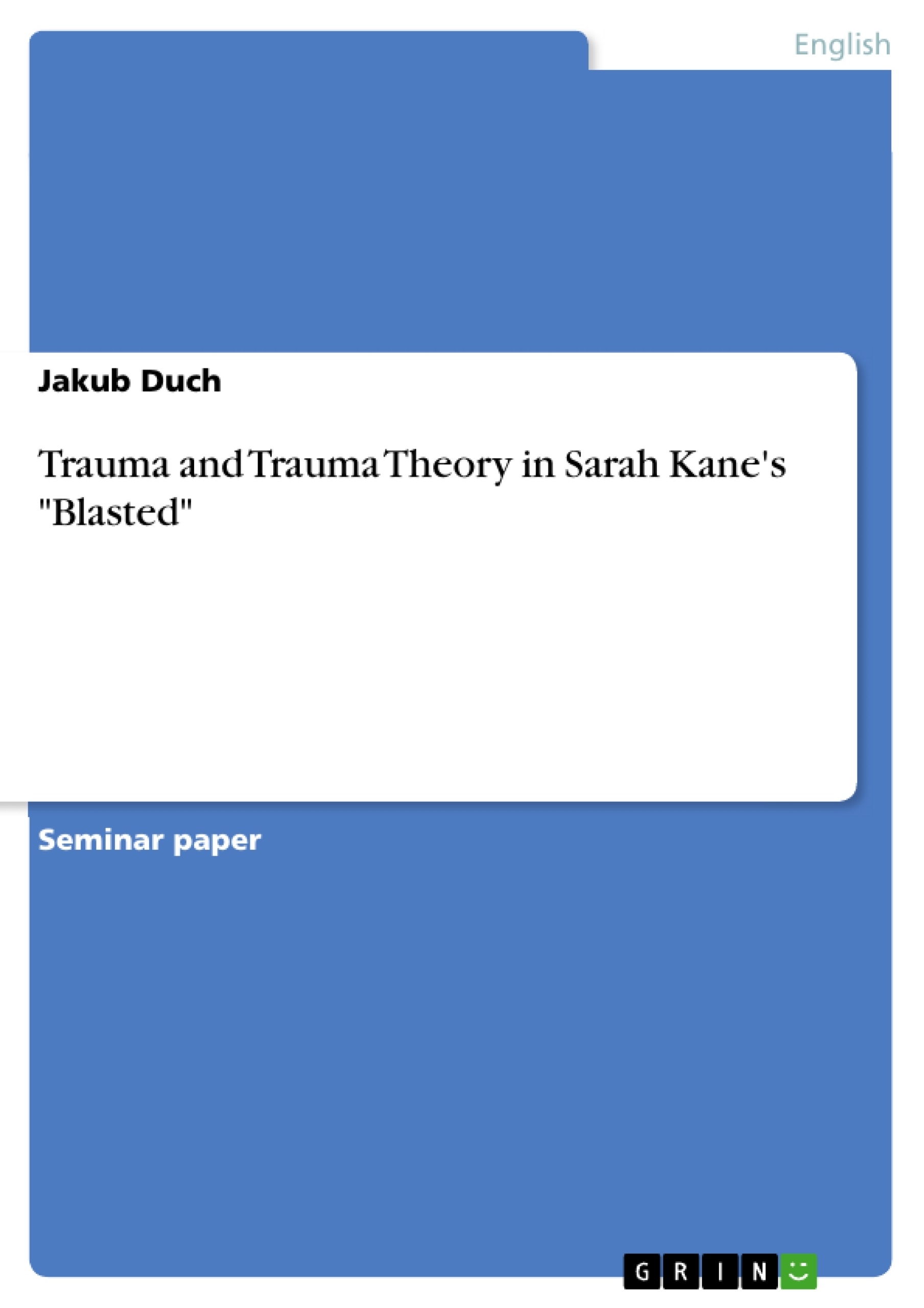One of Britain's most notorious plays of the 1990s, Sarah Kane's "Blasted" shocked the public and critics alike due to its graphic depiction of death and violence. Beneath this surface lies, however, a carefully thought out representation of trauma and its effects on the human soul. This paper explores the links between trauma theory and Kane's most famous work.
Table of Contents
- Introduction
- Trauma and trauma theory
- Etymology and historical considerations
- The psychological definition of trauma
- Symptoms of trauma-related disorders
- The bigger picture: psychoanalytical contributions to trauma theory
- Trauma and testimony
- Trauma and literature
- Trauma in Blasted
- Characters
- Ian
- Soldier
- Cate
- Stylistic devices: language, body, narration
- "Blasted" in the context of In-Yer-Face Theatre
- Characters
- Concluding remarks
Objectives and Key Themes
This paper aims to explore the complex and multifaceted concept of trauma in Sarah Kane's play "Blasted," examining its representation and impact on the characters and the overall narrative.
- The historical development and evolution of trauma theory
- The psychological definition and understanding of trauma
- The representation of trauma in literature and drama
- The role of stylistic devices in conveying the experience of trauma
- The significance of "Blasted" in the context of In-Yer-Face Theatre
Chapter Summaries
The first chapter introduces the play "Blasted" and its controversial nature, highlighting its exploration of trauma. It outlines the structure and scope of the paper, focusing on a detailed examination of trauma theory and its application to the play's analysis.
Chapter 2 delves into the historical and conceptual understanding of trauma. It explores the etymology of the term, its evolving definition, and its integration into various disciplines, including psychology and psychoanalysis. The chapter traces the development of trauma theory from its early roots in neurology to its contemporary understanding in the context of PTSD and other trauma-related disorders.
Chapter 3 focuses on the representation of trauma in "Blasted." It examines the characters' experiences of trauma, their emotional responses, and the stylistic devices used to convey their suffering. The chapter also explores the play's placement within the broader context of In-Yer-Face Theatre, highlighting its innovative and confrontational approach to depicting trauma.
Keywords
This paper explores key concepts such as trauma, trauma theory, PTSD, In-Yer-Face Theatre, Sarah Kane, "Blasted," stylistic devices, representation, and the relationship between trauma and literature.
- Citation du texte
- Jakub Duch (Auteur), 2015, Trauma and Trauma Theory in Sarah Kane's "Blasted", Munich, GRIN Verlag, https://www.grin.com/document/512049



